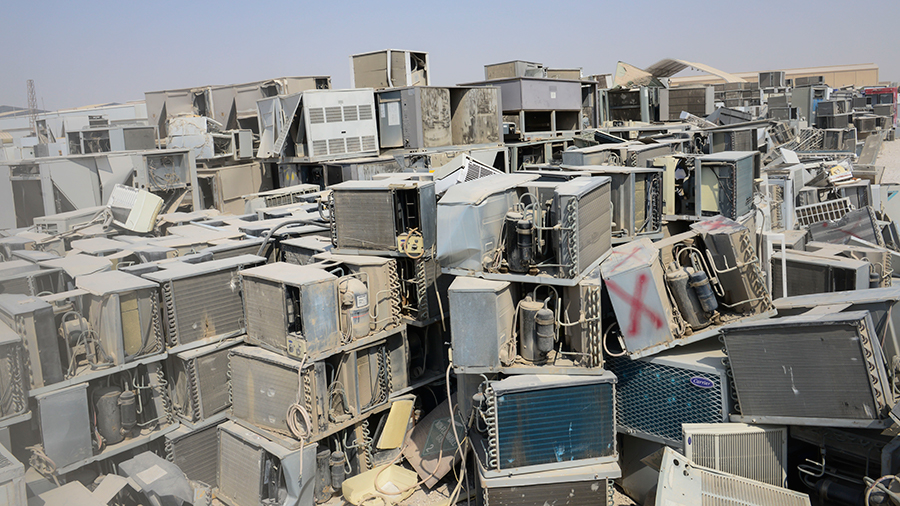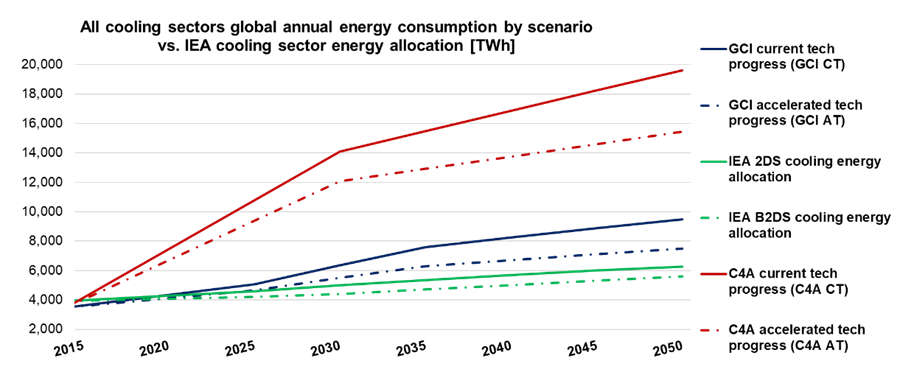Using GCI data (GIZ Proklima) energy consumption from the cooling sector is projected to grow approx. 2.5x to 9,500 TWh by 2050; current energy usage is approx. 3,900TWhs. This will exceed the IEA’s implied “energy budget” for cooling in its 2°C Scenario by more than 50% (6,300 TWh).
 However, projections of cooling equipment uptake still result in large portions of the world not having access to space cooling, refrigeration or cold chain even in 2050.
However, projections of cooling equipment uptake still result in large portions of the world not having access to space cooling, refrigeration or cold chain even in 2050.
As an indication of the impact of widespread global access to cooling – “Cooling for All”, University of Birmingham has used industry data to create a hypothetical scenario where the world has “Cooling for All”.
Read our A Cool World: Defining the Energy Conundrum of Cooling for All report (PDF)
Even with accelerated technology progress projections delivering aggressive energy performance improvements, the energy requirement still equates to 15,500 TWh which is approximately 2.5x the 6,300 TWh maximum sector allocation envisaged by the IEA 2 degrees scenario.
To achieve the required amount of cooling with the energy budget available requires us to double the efficiency of our cooling devices on average, in addition to the technology progress proposed currently.
Alternatively to “green” this volume of electricity would require more than 50% of the projected total renewables capacity under the IEA 2°C Scenario and 80% of the IEA Reference Technology Scenario projected renewables capacity by 2050. This increases to 101% in the event we do not achieve accelerated technology progress. Renewables in this analysis are considered as the combination of all biomass, hydro (excl. pumped storage), geothermal, wind (on- and off-shore), solar (PV and CSP) and ocean
Meeting Cooling for All with renewable energy
| Scenario | % of IEA RTS projected renewables capacity by 2050 | % of IEA 2DS projected renewables capacity by 2050 |
|---|
|
Cooling for All
Current Technology Progress |
101% |
68% |
|
Cooling for All
Accelerated Technology Progress |
80% |
53% |